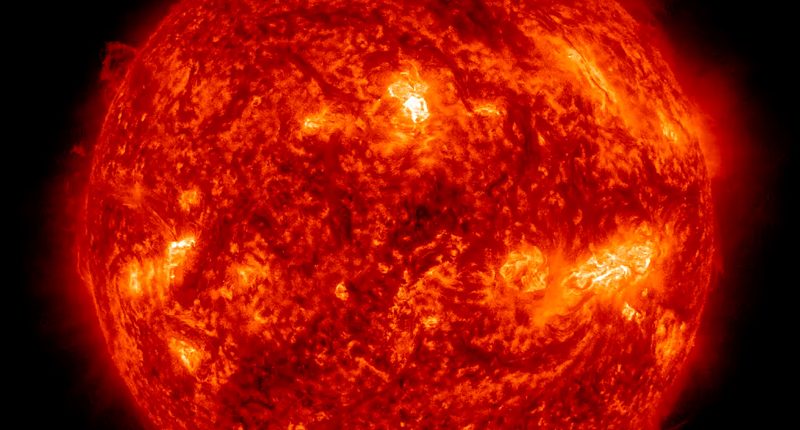A RARE ‘super’ eruption was captured blasting out of the Sun, where four separate flares exploded almost simultaneously.
The incredible quadruple eruption was captured by Nasa’s space-based Solar Dynamics Observatory (SDO).
Solar flares are explosions of electromagnetic radiation from the sun’s chaotic surface.
They occur when magnetic energy builds up in the solar atmosphere.
On April 23, Nasa caught four bursts all from separate regions, hundreds of thousands of miles apart, on the solar surface.
“Events like this are called “sympathetic solar flares” – pairs of explosions that occur almost simultaneously in widely-spaced active regions,” according to Spaceweather.com.
READ MORE ON SPACE
“Today’s sympathetic flare was not a simple pair but a complex quartet covering much of the sun’s Earth-facing hemisphere,” the site explained.
“This makes it “super-sympathetic.””
They’re not just coincidences.
The quartet of explosions are actually a chain reaction, linked by nearly-invisible magnetic loops in the sun’s corona – the outermost part of the sun’s atmosphere.
Most read in Science
How do solar flares impact Earth?

Solar flares have the power to wreak havoc on Earth systems.
But they can also bring about some spectacular Auroral displays.
While we will have to wait and see if any of the ejected material from the super-sympathetic eruption will impact Earth, here’s what might happened in the coming days:
Some areas of Earth may experience radio and TV blackouts as a result of solar flares.
Or you may be able to catch an out-of-character Northern Lights sighting.
Aurora Borealis – or Northern Lights – typically appear in Earth northernmost regions.
But after strong solar flares, they can appear in southern parts of the UK.
When impacts?
It’s unclear if we will feel the impacts of this massive ejection on Earth.
But if we do, they are expected to arrive on or around April 26.
Space.com points out that the quadruple blast could be a sign we are nearing the solar maximum.
The solar maximum is the peak of solar activity, which occurs every 11 years or so.
It is a time of heightened solar activity – and therefore Auroral activity – and is expected to occur sometime this year.
Find out more about science
Want to know more about the weird and wonderful world of science? From the Moon to the human body, we have you covered…










